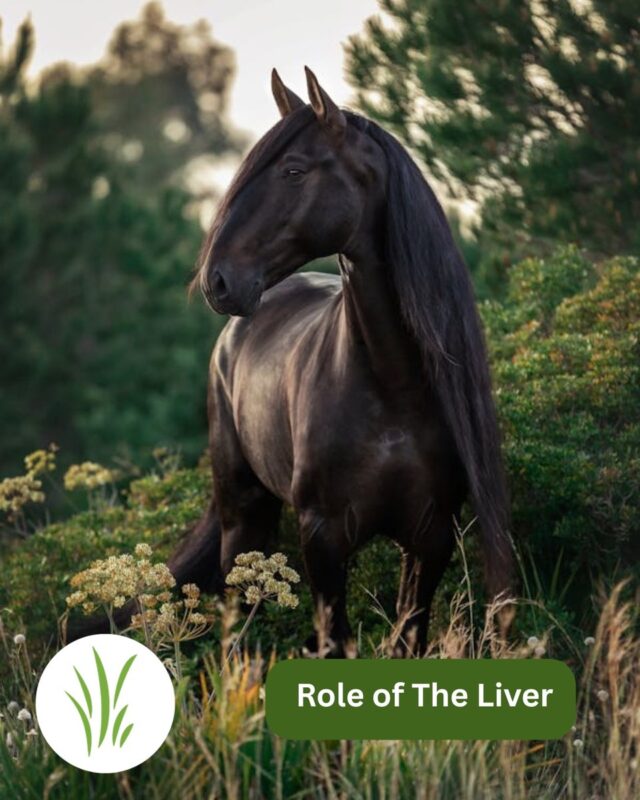
Liver Function in Horses
The liver is a huge organ which is placed mainly on the right side of the horse. It is tri-lobular, attached by ligaments to the diaphragm and the abdominal wall, and is supplied by arteries, veins, nerves and lymph channels. It also possesses a duct that carries bile into the duodenum.
About 75% of the blood passing through it enters from the portal vein. This includes blood from the
intestines, complete with the products of digested food, which have been absorbed through the
wall of the gut. Toxins may also be present e.g resulting from acidosis, ingestion of chemicals, etc. The other 25% of blood enters by the hepatic artery, which nourishes the liver cells. After passing
through the liver, blood flows out into the large veins leading to the heart; it is an important filter for
the digestive processes that start in the gut.
What does a horses Liver do?
The liver function in horses has many important functions, used for storage, for synthesis, for bile secretion, for detoxification and protection, and for metabolism. For example:
• It converts sugar to glycogen as a readily available store of energy;
• It converts amino acids into the proteins required for growth and replacement of tissue;
• It stores fat and vitamins.
• It regulates the levels of sugars, fats and amino acids in blood.
The production of blood proteins and viscosity such as fibrinogen, prothrombin and heparine takes
place here. The liver is best known for its detox function, i.e., it breaks down harmful substances (foreign
substances as well as the body’s own) and eliminates them with the help of bile and the kidneys. It
includes detoxifying and protective processes, such as the conversion of ammonia into urea to prevent toxic build-up and the de-toxification of drugs before excretion into the urine. A healthy liver means a healthy metabolism and immune system, keeping your horse healthy!
Tests for liver function or disease
Levels of bile acid in the serum and liver enzymes can be used as measure of liver function or
disease through a blood test. The enzymes are released by damaged liver cells and then enter the
bloodstream.
Elevated liver enzymes can be present in routine blood tests without any obvious clinical symptoms. Given that the liver has an amazing capacity to regenerate, it may take upto 80% of damage to it before any actual symptoms are present. If elevated liver enzymes are present in routine blood tests then a preventative approach to looking at the whole horse could be appropriate e.g carefully assessing diet, forage, water, environment for toxins, body fat levels etc. Some examples of symptoms of liver issues;
• Jaundice (yellowness of skin, the white of the eye and mucus membranes
• General malaise
• Lack of sparkle
• Unthriftiness
• Lowered performance level
• Muscle wasting
• Dull coat
• Liquid diarrhoea
• Foul odour to droppings
• Distended abdomen
• Recurrent mild colics
Physical issues resulting from liver problems
The nerve and fascia attachments from the liver show a strong influence over the right forelegs and
shoulder joints. If the liver is working hard to detoxify and process e.g excess sugars and toxins from grass/diet, this can show up in the fore limb. Mobility can be restricted and over time can result in issues with the ligaments/tendons, hoof abscesses and skin issues.
Tightness in the right TMJ and neck muscles may also occur. This can lead to issues being ridden
eg lameness, your horse may not accept the bit or show softness over the back. Behavioural issues associated from liver problems. Mobility issues and associated pain can cause anxiety, biting etc when being handled or ridden.
Take a look at our Liver & Immune System support products here
For more information contact
01432 851111
